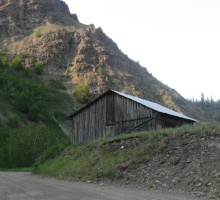Culture
Tahltan culture is intricately woven into all aspects of language, art, governance, law and everyday life. Our stories and legends preserve our history, and guide our way of relating to all living things. As an example, our stories provide inspiration to talented Tahltan artists, who enshrine our stories into beautiful moccassins, drums, blankets and other valuables. These are just some of the ways in which Tahltan culture is preserved and shared with the world.
Wellness
Wellness was an important part of traditional Tahltan culture. It was more than just physical health; it was a philosophy based on the idea of harmony between mind, body and spirit. Imbalance in one of these resulted in unwellness or illness. When the interaction was balanced and accepting, the result was wellness and a state of harmony.
Tahltan people were often treated by a shaman. Each native nation had their own traditions about how a person became a shaman. Some believed that only members of a certain family group could become a shaman. Others believed that certain people were born to be a shaman. Tahltans believed that men could choose to become shamans as part of their training as teenagers. They would choose this only if their personal energy was strong.
In order to become a shaman, a teenager must choose this path when he was deciding on his life work. His training was more intense than training for other boys. His manitou was a very powerful animal spirit. He might have more than one. Shamans were skilled in the use of plants and herbs, as these were needed to treat physical ailments. He also had strong person energy and was able to see and intereact with spirits.
Games
Long ago, gambling was a favourite pastime. Tahltan gambling games were similar to those played on the coast and those played inland. Most gambling games were played by men. Women had only one game, similar to dice games, with only one die used. Today, however, men, women and children all play the same gambling games if they wish to.
Gambling sticks was one of the favourite games. These sticks were made in two sizes. Larger sticks were about 20 to 30 cm or 8 to 12 inches long and about 1 to 2 cm or half to 1 inch in diameter. Approximately 18 to 30 sticks were in a bundle. The exact number was agreed upon by the gamblers. Only one set of these was used during a gambling match. Smaller sticks were about 10 to 15 cm or 4 to 6 inches long and about 1 to 2 cm or half to 1 inch in diameter. Each person had two bundles of smaller sticks with about 12 to 30 sticks in each bundle. This way, a gambler could change sticks “for luck”.
In each bundle, one stick is different. It is called the ehke (foot) stick. Nowadays it is called the joker or trump stick. It has a different design or is a different colour from the other sticks. It is the winning stick and must always be won last. All the other sticks are called painted sticks.
